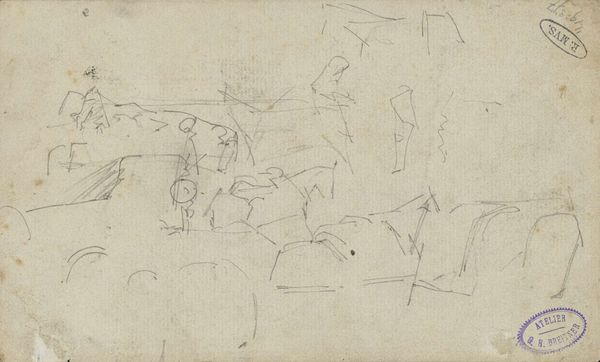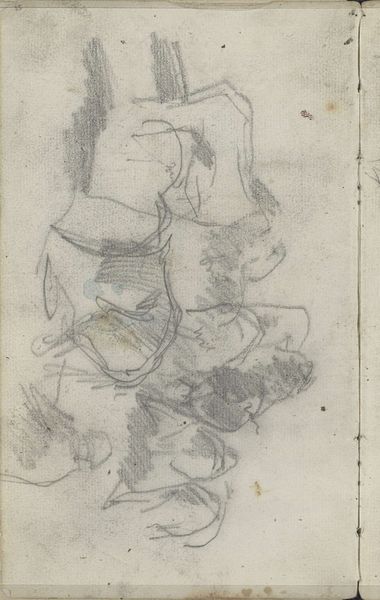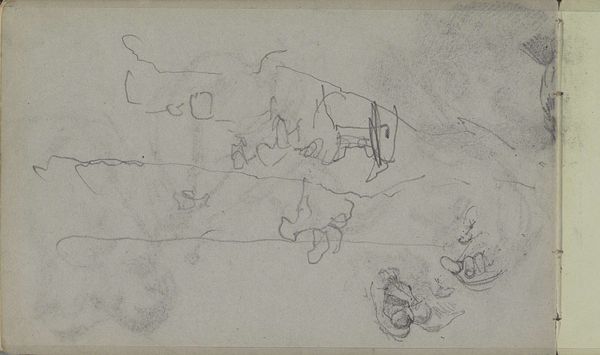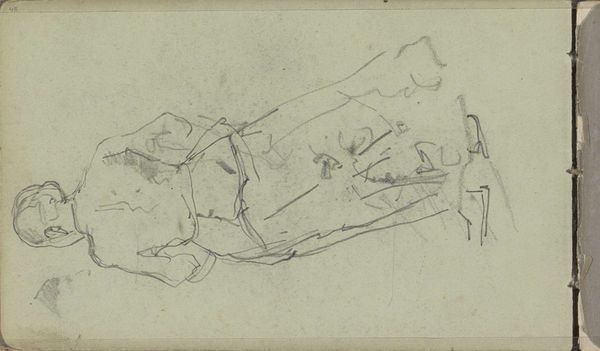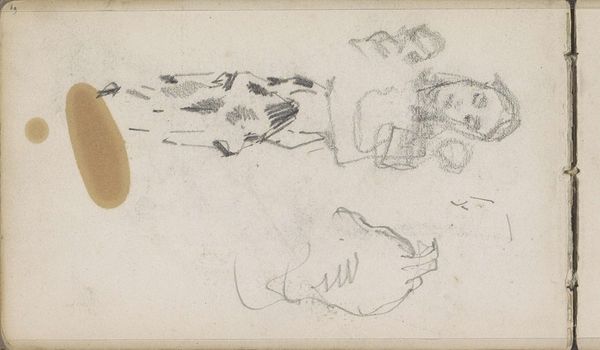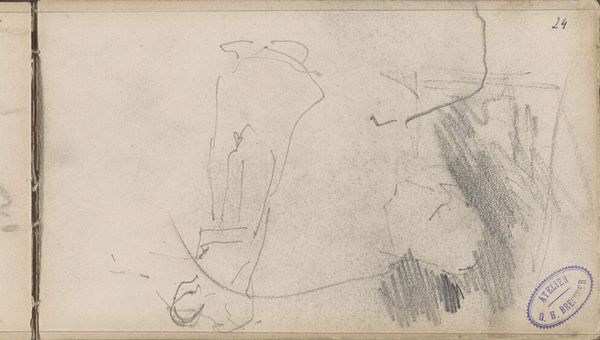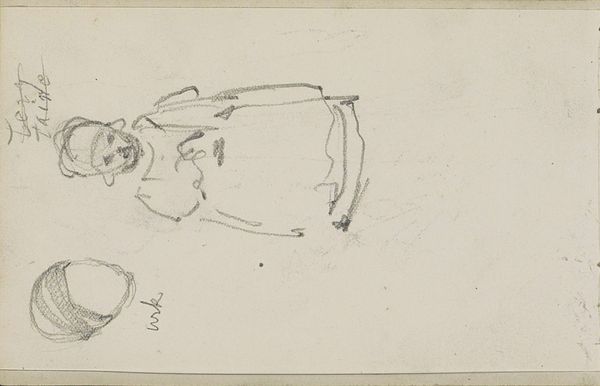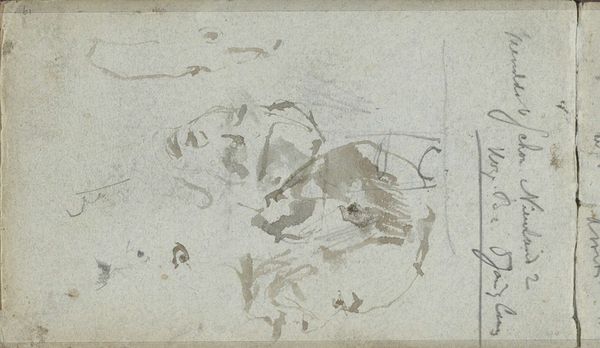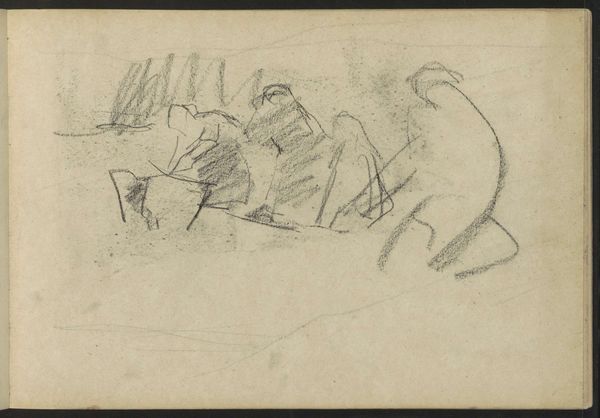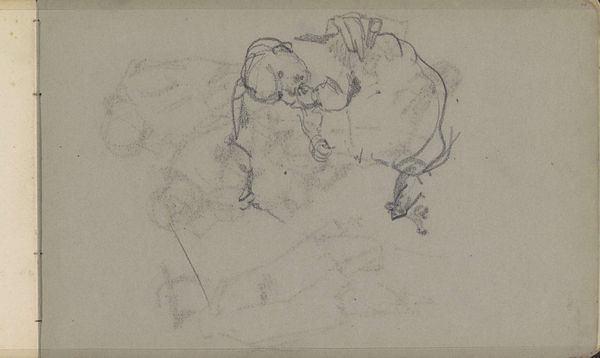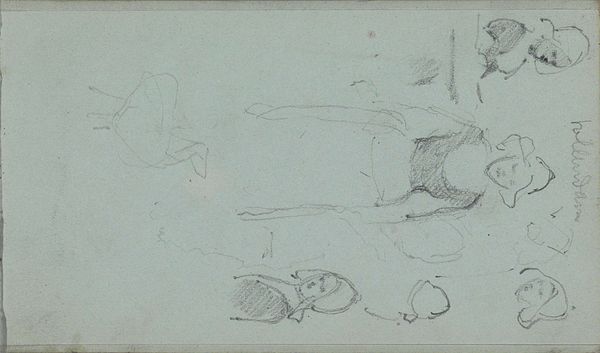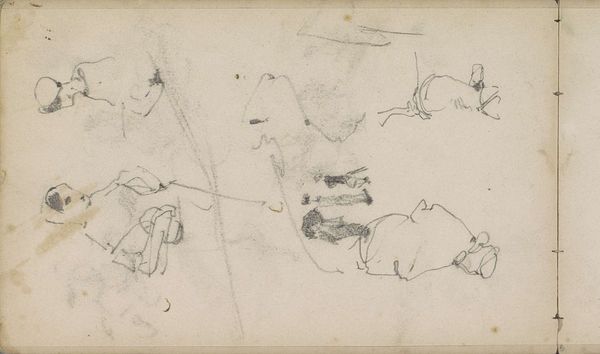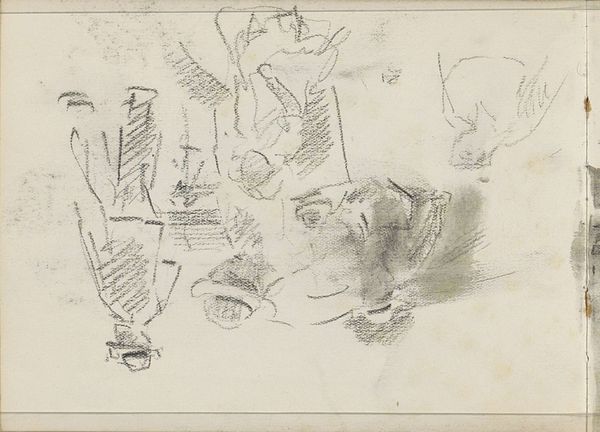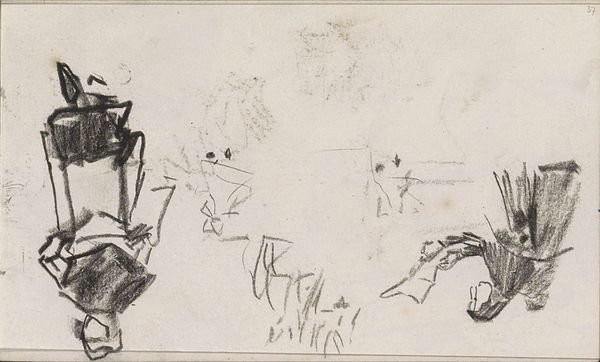
drawing, pencil
#
portrait
#
drawing
#
dutch-golden-age
#
impressionism
#
figuration
#
pencil
Copyright: Rijks Museum: Open Domain
Curator: It feels incredibly intimate, doesn't it? Raw and unfinished, almost as if we've stumbled upon a private sketchbook page. Editor: Indeed. Here at the Rijksmuseum, we have George Hendrik Breitner’s “Three Figure Studies,” executed with pencil sometime between 1880 and 1882. Curator: Breitner, even in these quick sketches, manages to capture a real psychological depth. Look at the figure at the bottom; there’s such vulnerability conveyed through the posture alone. Do you think this portrays the cultural concept of melancholy? Editor: It’s possible. During that period, there was an interest in exploring various emotional states through portraiture. However, I'd suggest it’s more a document of working-class life in Amsterdam. Breitner moved to document life through this lens because it was not commonly rendered in paintings at this point, focusing mainly on elites of society. It seems Breitner wasn't interested in portraying people with rosy dispositions in the Dutch capital. Curator: I see the tension between how psychological depth informs the piece while the socio-historical lens provides its purpose. Did he display any of these works publicly, or were they simply kept for private viewing in the atelier? Editor: These studies likely served as preliminary explorations. Often, you'd find such preparatory works informed larger, more polished compositions intended for exhibition or sale within art societies, but I would be amiss if I called them purely functional: their gestural spontaneity bears emotional meaning on their own terms. Curator: So they're potent carriers of emotion. Take for example, the repeated image of what looks to be a sleeping head on the right. Consider the association with sleep, that place of vulnerability... or transcendence. Even rendered so roughly, it evokes something primal. The figures give us a sense of being in liminal spaces and the exploration of that symbolism. Editor: And that interplay of public ambition and private reflection is precisely what makes an artwork so compelling; the artist negotiates a place to exist, with personal and institutional agendas meeting in their creative efforts. Thank you, these have been wonderful insights to share! Curator: The pleasure was all mine! I appreciate the look we had into liminal spaces through this intimate glimpse into human emotion through Breitner's sketches.
Comments
No comments
Be the first to comment and join the conversation on the ultimate creative platform.
